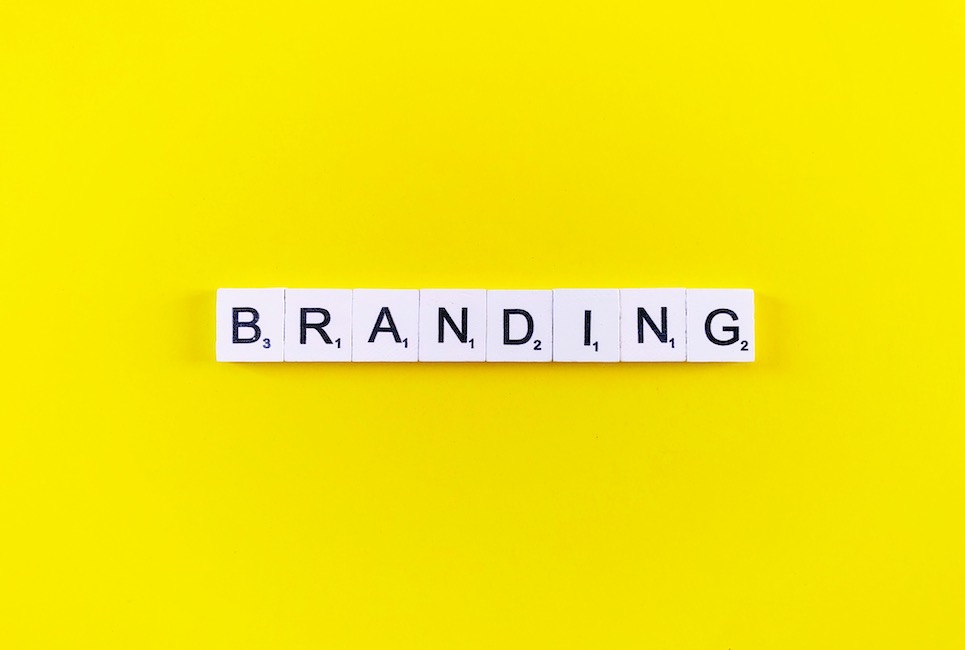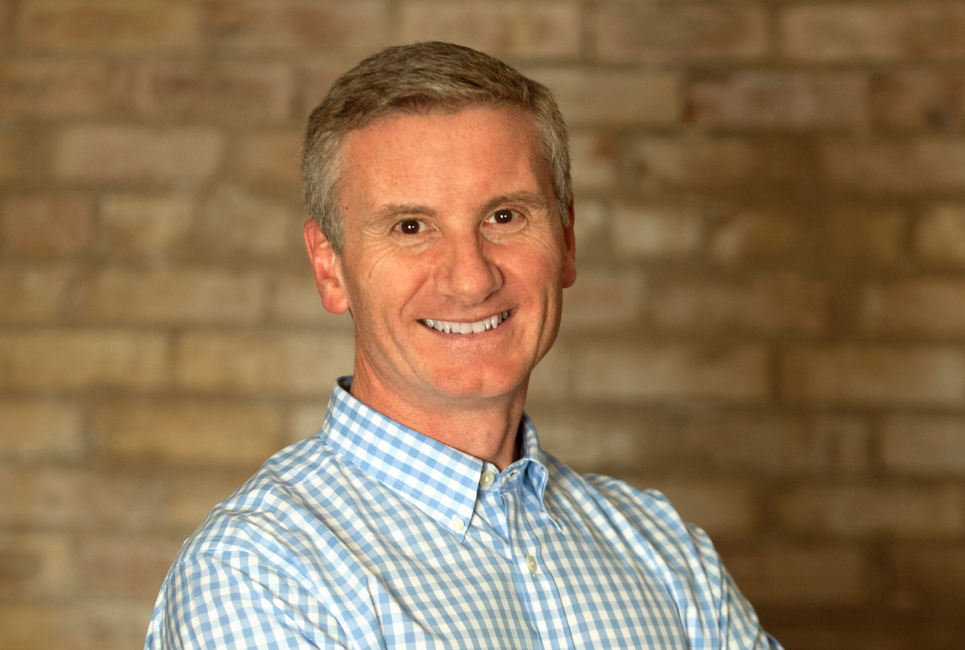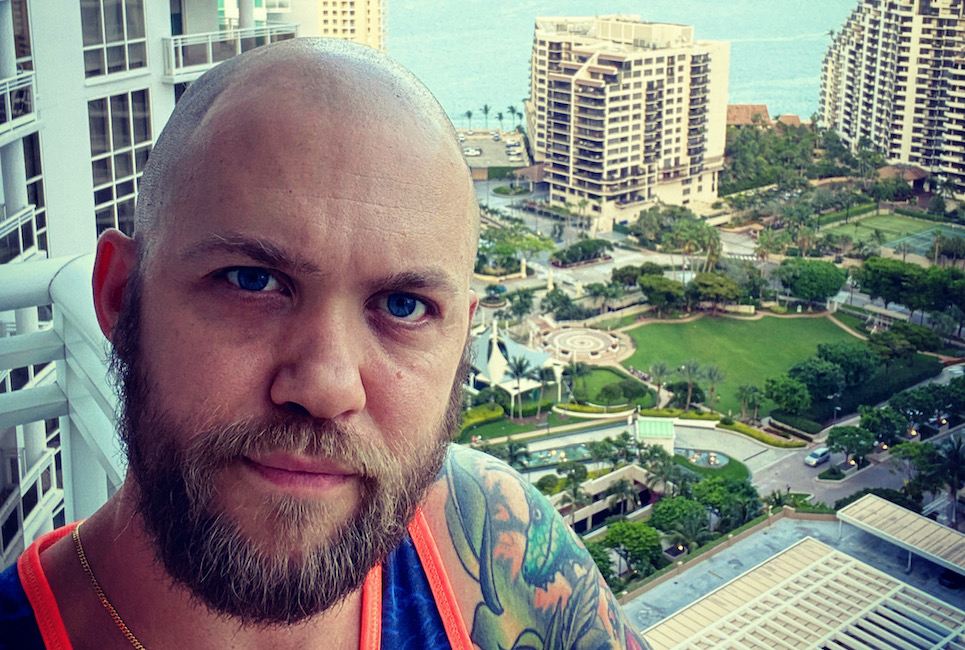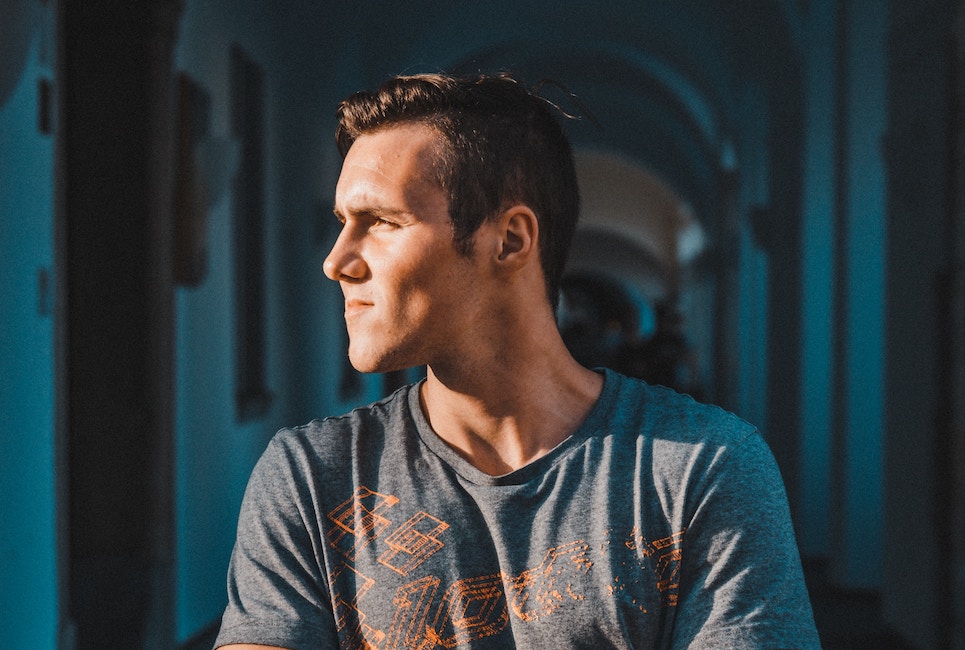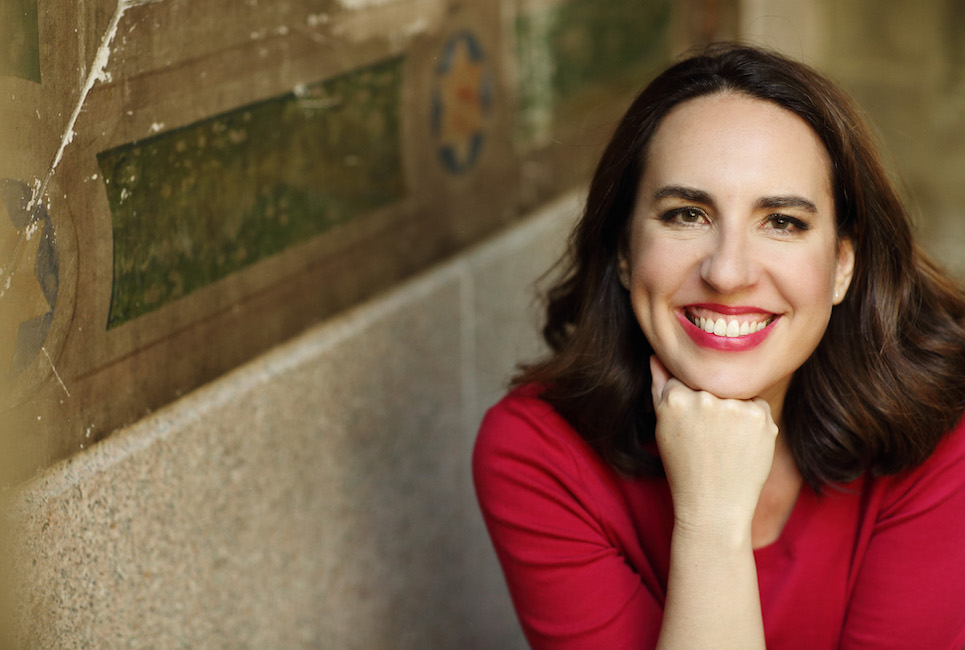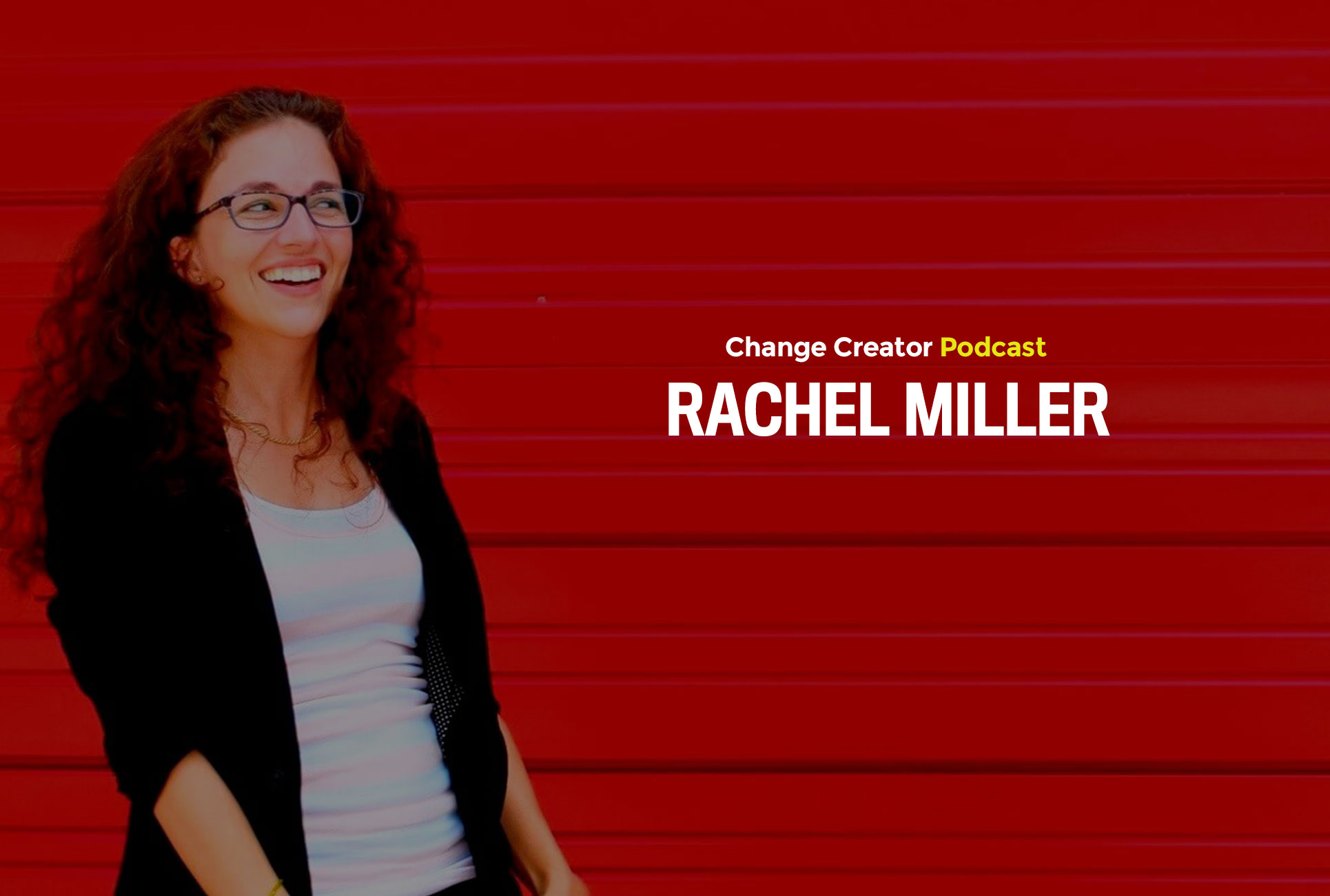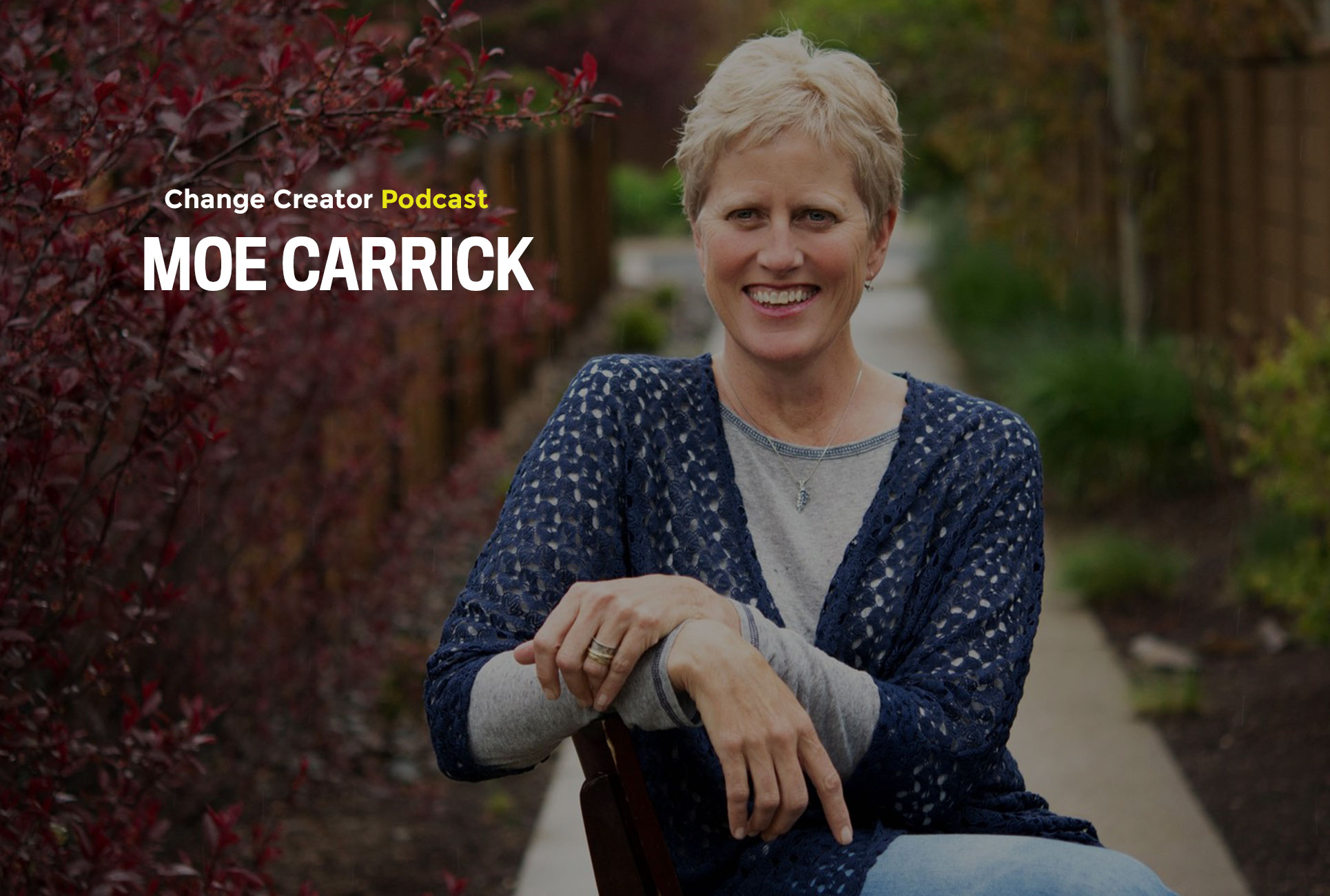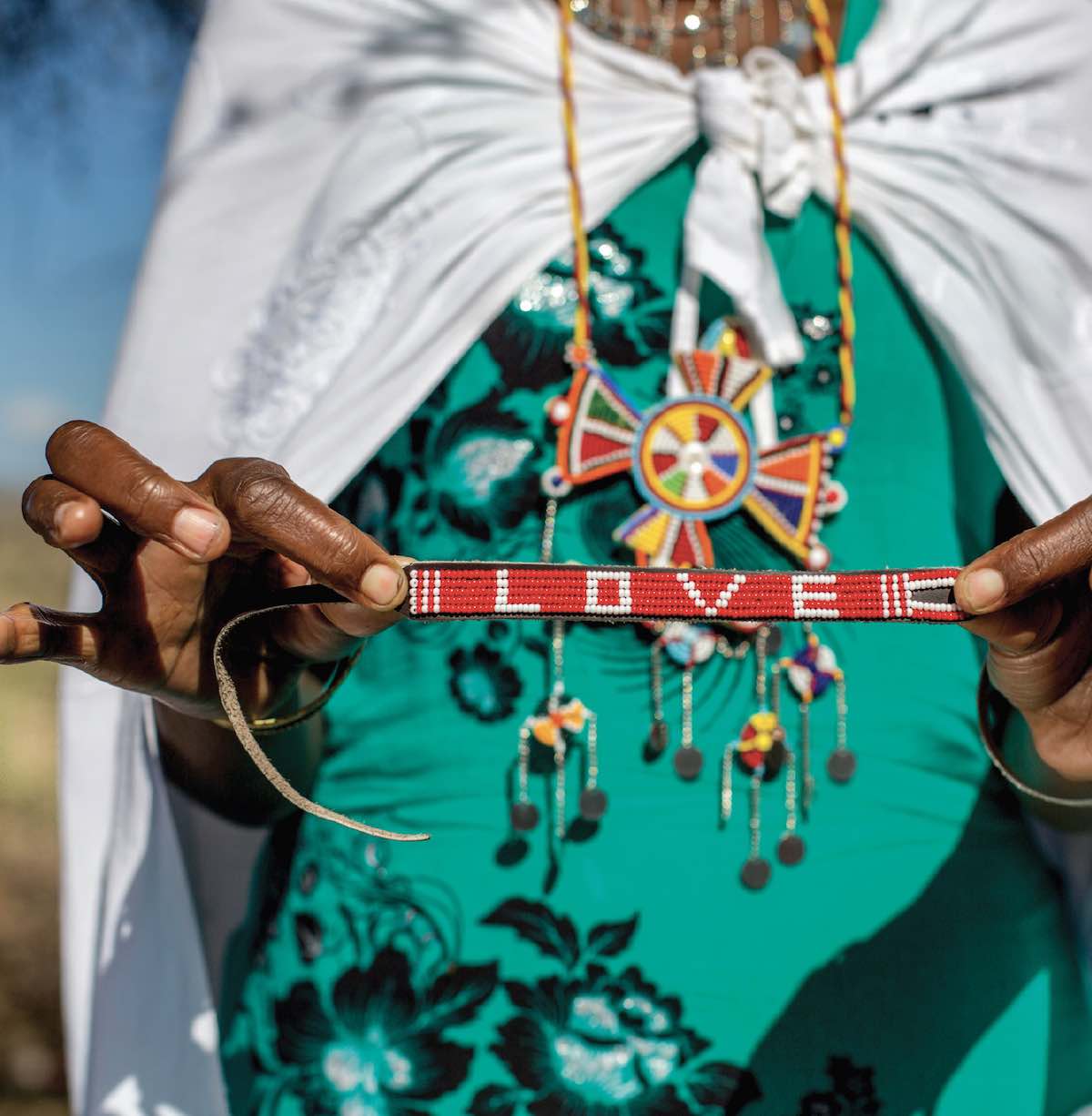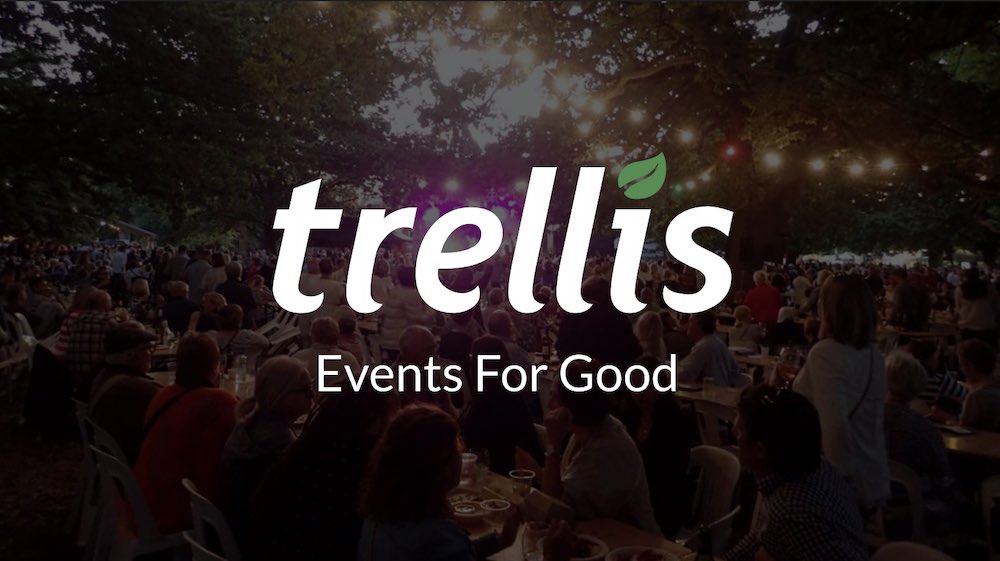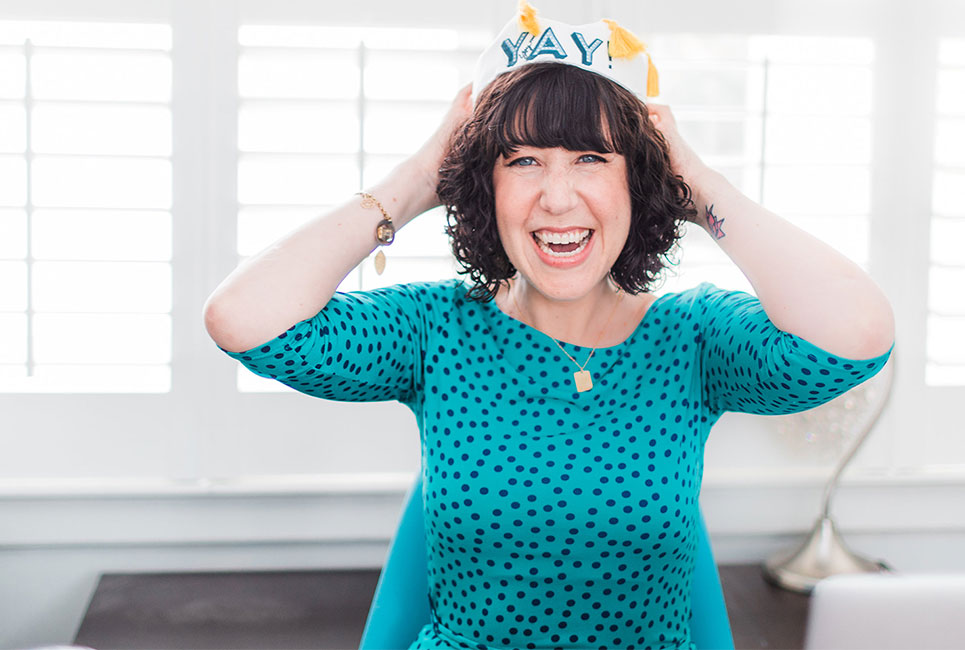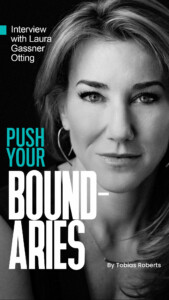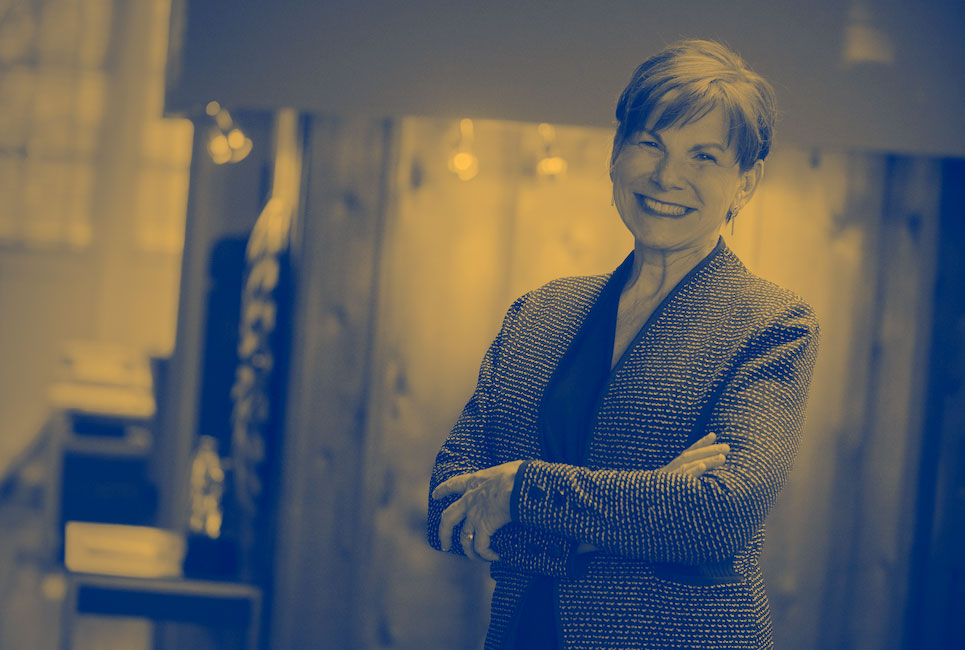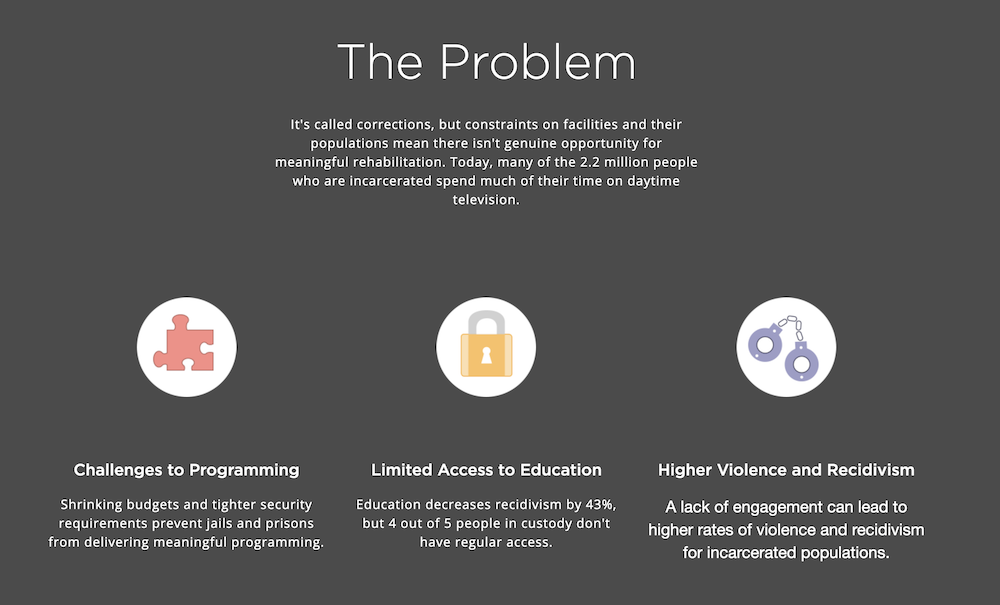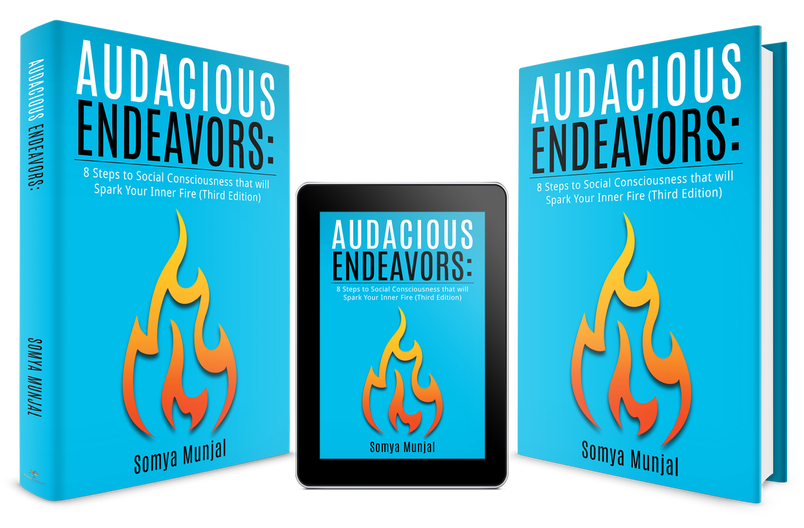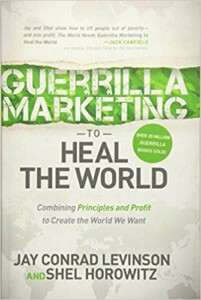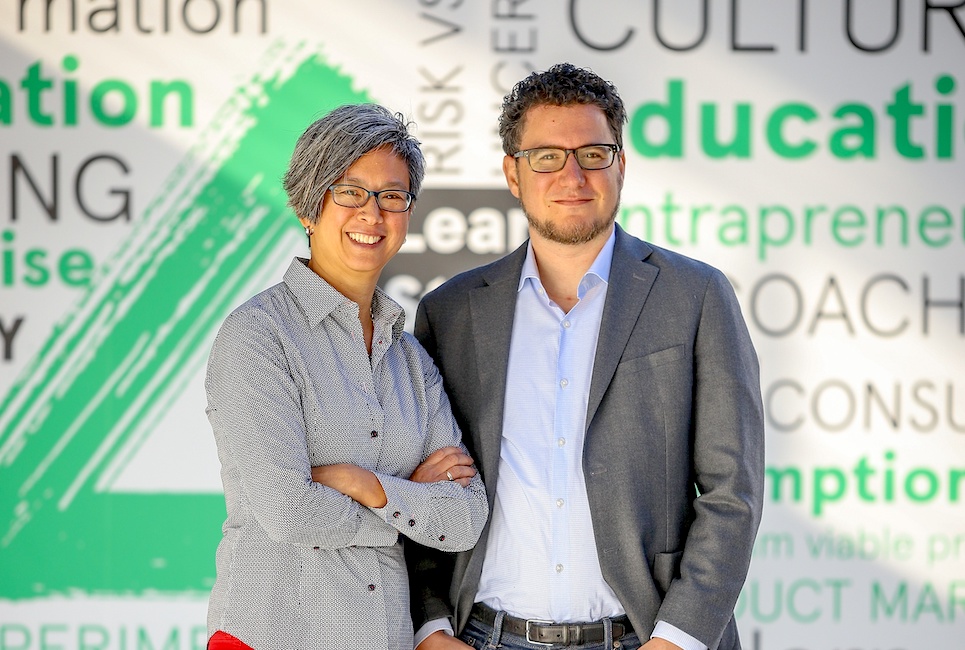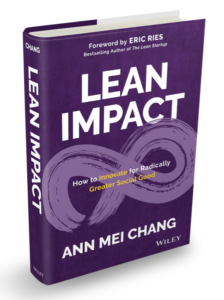Interview with author and founder of Moolah Marketing, Rachel Miller
Subscribe to this show on Spotify | iTunes | Stitcher | Soundcloud
Rachel Miller has a big heart and is a marketing shark!
So much fun to talk to during this episode as she shares the secrets behind an impactful Facebook strategy to help you grow an engaged community.
Our team has learned a lot from Rachel and stand by her teachings.
Not only is she expert in Facebook marketing but she’s an author with two books that have sold over 100,000 copies EACH!
A little about Rachel…
She calls herself a mom who is a coffee-chugging, extrovert. She’s been building pages for over a decade, some into multi-millions in fans which she, of course, used to promote her wildly successful books.
She appeared on Good Morning America to discuss her viral video and has spoken to crowds in the thousands.
But what she loves the most is seeing others do the same thing.
You can check out Rachel’s books here:
The 101 Coolest Simple Science Experiments: Awesome Things To Do With Your Parents, Babysitters and Other Adults
101 Kids Activities That Are the Bestest, Funnest Ever!: The Entertainment Solution for Parents, Relatives & Babysitters!
Full Transcription of Interview
(Note, there might be some errors below. Transcribed by https://otter.ai)
Download a PDF of the full interview here!
Adam Force 0:11
What’s going on everybody? Welcome back to the change credit podcast show excited to have you here. If you guys missed last week’s episode, we spoke with Sydney Sherman, a really great conversation. She’s building an online marketplace that is helping combat poverty through the things we buy. But she talks about her, you know, challenges and successes of actually building an online marketplace and what that’s all about. So, this could be really interesting for anybody in the online marketing space, a lot of key lessons and insights there in the e commerce world. So today, we’re going to be talking with somebody that we’ve been connected with for a little wild in 2019. And she is a super duper rock star. And her name is Rachel Miller.
So she’s been on a tear lately, and she is about mom of six children. She’s, you know, adopted a bunch of children, and she’s doing amazing things in her family life. And we love her for that. And she’s also running several businesses. So you know, you have to ask, scratch your head and say, how do you how do you become a mom of six children run several businesses successfully, and have time to actually enjoy anything else in life, right? But this is what she does. And she’s really, really good at it in her business that we found out about her for his moolah, which is all about helping you grow your Facebook audience, right. So if you have a business, you got a business page, and you’re using the Facebook ecosystem, Rachel is the guru on how to grow an engaged audience. And we’ve learned a lot from her and her strategies. So we’re going to talk about all that with Rachel in just a minute.
For anybody that doesn’t know already, we’re very excited because just around the corner, we’re going to be releasing the next edition of changes magazine, June 15, with the one and only Blake Mycoskie. Blake is a super Rockstar founder of Toms, for anybody that just happens to not know he’s also the creator of the whole model, the one for one model. You know, you buy a pair of shoes, you give a pair of shoes to someone in need. And we get into some really great conversation with Blake so that cover story is going to be killer. So keep an eye out June 15. That will be coming out with Blake Mycoskie.
If you haven’t checked out issue 27 of change career magazine, we had NASA rain shake. She is a incredible woman credible, incredible. She’s very inspiring. She’s from Nepal, she was actually a child slave. You know, she worked in terrible, terrible conditions for years. From 4am to midnight, she found her way into education. And she was able to start two businesses now to combat child labor and support women in Nepal. Her story is very, very inspiring. And we met her over in Toronto, this is how we got connected at the by good feel good Expo. Lots of good socially conscious consumers, manufacturers and entrepreneurs. And she was there doing a speaking engagement and also telling people about her products and businesses. So a lot of fun. We had a video interview so you guys might have saw some of those clips flying around Facebook. Yeah, so check out issue 27 really good stuff.
We also had Laura Gassner outing, she was just on Good Morning America. And she has an incredible book called limitless. And the article in issue 27 is called pushing your boundaries, she will light a fire under your butt. So you’re going to want to check that out. Alright, guys, we’re gonna jump into this conversation with Rachel.
This was actually our first video interview we ever did, we did it over zoom, we actually found that that the audio quality is not our favorite. So bear with us. It’s not the normal, but it’s also not bad. So everything is good. Just want to give you a heads up on why there’s a little bit of a difference there. But you will also get to see some of the video clips flying around Facebook as we put them out there with Rachel talking about some of these key points. So make sure you follow us on Facebook guys. And if you want to learn how to put storytelling at the heart of your marketing, join us in our group storytelling strategies to grow your impact business. Lots of good stuff going on there. Okay, guys, let’s jump into this conversation with Rachel Miller.
Unknown Speaker 4:25
Okay, show me that. Hey.
Adam Force 4:30
Hey, Rachel, welcome to the change creator podcast show how you doing today?
Rachel Miller 4:34
I’m good at I’m thrilled to be here. Thank you so much for hosting me.
Adam Force 4:37
Absolutely. Well, you’re welcome. So much. I want to pick your brain on and I know our audience is dying to hear from you. You know, the Facebook guru over here. I love that focus. I love what you’re working on. There’s so much power and value in marketing on Facebook. So before we get too deep into this, tell us a little bit about what you’re working on. Now, what’s the latest one?
Rachel Miller 5:00
Well, I just I have a course. And that’s pretty much it. I don’t have like a massive value letter, I have one product that I give people a lot of value in. So that’s my my marketing philosophy is to help people make the biggest impact on the world with their own businesses. And the fastest way that I can do that isn’t Of course. So that’s what I do.
Adam Force 5:23
And yeah, watch for it. Because, you know, guys, look, I’m gonna say something here. She’s a marketing shark, you’ve got to be, she will suck you into this vortex of I gotta have it. And that’s it, you’re done. But the good news is,
Rachel Miller 5:39
the thing is, I don’t just do this for me, I have websites, I’ve created multiple websites, and they’re still running today. And they’re still earning, and they still bring in people. So it’s, I have that business and in addition to the business where I teach people how to do it.
Adam Force 5:53
So I’ll Break That down a little bit. So I know you have you been in like the marketing website kind of world for quite a while. So if you could just tell us a little bit about how you converted from that world, I guess you think you’re still in it? Where did it start? And how did you get into your massive Facebook page strategy stuff?
Rachel Miller 6:12
Yeah, I began as a mommy blogger, and I had to quit my job as a teacher because we had too many kids that couldn’t afford daycare. And that was like heartbreaking for me, because I was like, in with people all day. And now suddenly, I couldn’t be with people, the world was going to end. Literally, I was probably like saying the world was going to end. Anyways, you know how it gets if you’re like a key person and I felt caged in. So my husband came home, he’s like, you can apply here, here, you can interact with people on a blog. And at the time, we didn’t even have a car for me, because that’s how tight things were we My car broke down and we couldn’t fix for the repairs because I wasn’t working anymore. And we had these babies. So I’m saying he’s like, get a block. And I don’t know, if you meant to get a blog like so you can, you know, help us pay for the grocery or, you know, get a free movie ticket, because you’re an influencer? I don’t think I think that’s kind of the level he was thinking it was going to be I don’t think he meant for it to, you know, meet a scale into a business of getting 10 million page views a month and like a 2.2 million fan base page. And then the second or third families aged two more families ages to Pinterest accounts. And he’s like, now he’s like, so you’re going where? And you’re speaking where when? Oh, ok. Ok. I know he was not anticipating any of that. But God’s grace, it’s happened. And yeah, we are we get to I have businesses, I’ve got two best selling books that my businesses have been able to create. And then and when I say best selling, I don’t mean like a New York Times bestseller because it only takes 1000 copies to get on New York Times bestsellers. I sold over 100,000 copies of each. So yeah, it’s I’m like we’re
Adam Force 7:55
talking topics of those books, just so we get a sense of what kind of category we’re playing
Rachel Miller 7:58
in activities, kids, kids activism parenting. Yep,
Adam Force 8:02
I have no,
Rachel Miller 8:04
I have six kids. So out there, I’ve got six kids. So I’m able to do this working mostly part time. So I don’t know very many other entrepreneurs that work under 35 hours, guaranteed every week. And that’s kind of where I am because I have the kids. So I’m working as full time as I can.
Adam Force 8:23
I mean, wow, I don’t know how you do it. Because I you know, I know people have one or two and they are having a difficult enough time.
Rachel Miller 8:33
I find it makes life fun. And honestly, I would not be the mom I am without my business. And I would not be the business owner I am without being a mom, because it helps me focus my business. So I can get a lot done. Because I have all these deadlines of these little bodies that are saying, Mom, you need to come do this, we need to go here. So I have because you’ll just shorten your amount of work time I think I get more done. But then in addition to that, I say saying because I have a job. My life is not like my children because I you can wrap your identity up and your kids. And for me that was that was stifling me. And it was it was making me go crazy. And I can stay sane. And I wouldn’t say that I literally went more sane, because they’re also
Adam Force 9:13
your fulfillment team. I saw the photos.
Rachel Miller 9:17
They’re awesome. That’s fantastic. So somebody said we should, I should outsource that I’m like, but then I wouldn’t be able to get tax write off for me
to work. So this is a win.
Adam Force 9:29
Like a true business mind.
So okay, so I’m curious, let’s let’s dig into some of this a little bit. And I know a lot of people listening here they have they get frustrated, they get frustrated with Facebook, because well one is so powerful, but it’s also complex, right? So there’s a lot of different things you can get sucked into $50 a year hundred dollars. So am I doing this? Right? I did. So you know, it like if you can just give the one on one. How did you start getting knowledgeable about what works? and what doesn’t just trial and error? Like Where did the marketing expertise start to grow for Facebook?
Rachel Miller 10:06
Well, I think it started before I was in Facebook. So how many of you, I guess your everyone in the audience?
I don’t know why I’m saying that. Um, but anybody who’s here Seriously, though, like, raise your hand like, you know, verbally let let Adam know. Are you a people watcher, because if you’re one of those people who when you go to the diner and you like hear the ladies to two booths over who’s talking loudly, and she’s telling her story about something, you’re like almost drawn into her life, or you’re imagining what she’s doing later. Or, you know, if you’re a painter people watching, you’re like, I’m kind of pigeon holing all the people that you see around you, if that is who you are, you’ve got the perfect, you’ve got all the skills you need to become me. I’m that’s what I did in college. And I think that skill that I developed in college led me to become a really good marketer. I started I grew up in the night, so, and I was homeschooled. So but so we’re talking like homeschooling was just legalized. I knew like six other people that were homeschoolers. It was like, teeny tiny group. My I mean, like, my social circle was like, non existent. And, and I’m an extrovert, right? So as soon as I could, I left and I went to college, and in college, I realized like that, how everyone else knows who Michael Jackson is. and sweet is like, this is like everyone else comes in boys. Everyone knows Michael Jackson. And they’ve got these dance things. And you don’t know who any of these boys are. And yeah. Anyways, I didn’t know what clothes to wear. So okay, I was starting at like zero when it comes to social skills. And so I sat and I watched people, and I watched what do people do to get reactions out of people? What kind of reactions are positive reactions? What do those popular kids do? That everyone walks to them? Why? Why what what are they saying? What kind of actions are they doing? I noticed something that now I know is like nearing where if you lean in when they lean in, if you move to the left, you know, if you do those actions, people respond to you. Well, guess what we do in marketing, we are our audience, we literally get to know our audience, and we mere their actions. It’s the same type of tricks that we do in a party to get interactions. When we go to a party, we don’t start instantly talking about ourselves. That person does that. Well, in marketing, how many times do we have ads fall flat? Because we start them we start the relationship, spouting out all these facts, and why they need guys like running over here at the party like Dude, I just I didn’t. I was at a party and a guy named Rob. I love Rob, because I love Rob, Rob gate kept trying to give me his his card so I could buy his refrigerator surface. And I’m like, dude, I don’t actually need refrigerator service right now. I think I’m good. I swear to you, I’m good. And he could not let it go. He was like you need was like I so I like literally kind of bailed the party because him following me try to tell me about these refrigerator, refrigerators. And how if I promote him, then he gave me a free refrigerator. And, and you know, all this stuff, right? We don’t want to be that person. We don’t want to follow people around. Yeah, annoying way. Yeah. And just like we do in life. So if you’re a people watcher, and you’re watching the poor girl getting chased by Rob, the refrigerator salesman, and you know what that feels like, you know, you’re able to see that situation. And if you can see that situation, a real life, you can see that same situation online. And you can rescue those people and you can be their friend, you can be their loud speaker, you can be that that popular person online, with your business, loving people serving people and selling to them.
Adam Force 13:46
Well, I love what you said about the refrigerator story, because it’s really important, like what people miss is that when it comes to sharing what you have to offer any kind of story, you know, we’re really into the storytelling stuff. And when you talk about connecting with somebody, there’s also the factors you have to consider a time and place. So if your timing is off, and the place is off, like it’s even if you have the right message, it’s gonna fall flat. So I love what you said,
Rachel Miller 14:13
I noticed this myself, okay. Um, I often we go right to the solution. And we want to tell our audience about the solution before they brought it bought into the fact that they have a problem. So we also have to go right for that I’m going to solve your problems. I’m going to solve your problems. Here’s the pain that you have. Let me fix it for you. And what is that? If somebody comes to us, like, oh, maybe my mom and says, I’ve got a solution for this problem you have you just need to fix it these ways, like your kids. drive me crazy this way. Well, if you did these five things, your kid wouldn’t bother you so much. How many of us have heard our our mom or mother or grandmother say those things and rolled our eyes? Yeah. Okay. It’s the same thing we do with our ads. And I fell for this because I I’m Ashley black actually bought I think appreciate that dream, like spacing for a second here. But she has this thing for cellular lice it cellulose in women like with fat dimples, okay.
100 pounds. So in my mind, I don’t need this product, right.
But she doesn’t talk to me about my problem have how she’s going to fix my problem. She talks about chickens, and how there’s this thing with chickens and how they fit. And next thing you know, I’m watching this product demo
about chicken fat. And before long, I’m like, you know, I might have a problem with dimples.
You had come to me with a problem. If she had come to me with a problem. I would have like run like this marketing’s way off by like $80 worth of stuff. Because she didn’t sell me the solution. She sold me on to the problem first. So in not in a way that says you have the problem. But more like other people have this problem. Don’t worry about you. Yeah, don’t worry. We’re not talking about you. Were talking about these other people. Yeah, exactly.
Adam Force 16:06
And they do start relating and it starts resonate.
Looking at myself going
Rachel Miller 16:10
you know what, I might be 100 pounds, I still have those dimples. Personally.
Adam Force 16:19
Well, and it’s and you know, one of the things that we had an expert come in that kind of worked with us on some of the stuff that we’ve been doing. And they talk about exactly what you’re saying, which is kind of like having these persona ones. Right? Here’s your audience, right? But are they already? Where are they in the funnel? Meaning do they already believe that there is a problem or, you know, if they don’t, then you have a totally different messaging. So you can get them there, right. And I think you’re just hitting the nail on the head. And it’s this whole game of psychology and the more you can understand where someone is that is in your audience, the better you can serve them. And that that’s, you know, right, the way you think about is how am I helping them and getting their
Rachel Miller 16:54
test? And if you know your audience really well, then you Next up is Do you love your audience? If you can love your audience, well, how do you love them? And that’s that is by serving and selling to them. So I see serving and selling is kind of the same thing. Yeah. Because when you serve them, you’re going to serve them in a way that most helps them take action. If I spent $2, on the cellulose tool, would I actually use it? know, if I spent $180 on the cell us tool, I’m probably going to use it. Yeah, he’s getting me to have action in my life and see a transformation. Because I’m using whatever that tool thing is the facial blaster, that’s what I was. Because I’m using that because I spent enough money to have the buy in for it. So we if we love our audience, and we’re not just going to just serve them by giving them like
Adam Force 17:42
things for free. We’re going to serve them by selling to them so that they can have a transformation in their lives. Yeah, no, that makes sense. So So let’s dive into the Facebook world a little bit more for people. And you know, we have these Facebook pages. We have Facebook groups, and then maybe the private things they buy your membership. Of course, you might have this like private stuff. So let’s define them a little bit for people because I think there’s a misperception of
Rachel Miller 18:09
geeky on you. And I like chicken scratch to now, let’s go through it like,
Adam Force 18:13
what is the page? Like? How should we think about a page and the purpose it serves versus a group and so on, so forth? And if you can maybe walk through some high level ideas just
Rachel Miller 18:23
on Yeah, well, I kind of think, well, I sketch it out. So I know that some of your audience is listening, but I’m like a visual person. So I like just ignore my doodles, but I doodle it out for people. So if you’re listening later on the podcast, and you want the screenshot, maybe hold a screenshot, or something, I’ll send it to you. Okay, guys. So we’ve got five different elements of Facebook, it’s not, it’s not just groups and pages, there’s so much more to Facebook. And as businesses, we kind of at least need to be aware if not having our fingers and all the pies. And so we’ve got our personal profiles. And like we’re asking, How do I optimize? These are what do we do with our messaging, our story on each of these with personal profile, I want to establish trust with my audience. So that is, who am I best able to connect with? Who am I best able to serve? And for me, I relate best two families, because I’ve got a big family. And I understand like the struggles that families have, in a way that I don’t understand the single 22 year old guy. So in comparison, that’s who I’m trying to track. So what do I do on my profile? To make me attractive more to families? Am I going to have a funnel that says, do this and get rich and have freedom? Well, maybe, but they’re kind of tied to their family. So they’re more for security? What can I do on my profile that establishes trust in who I am, I’m not using my profile as the funnel for them to enter my content. I’m using the funnel my profile, as when they engage with me in groups, when they engage with me on my page, and they go back to check me out and they’re stalking me. What do they see that’s going to make them love me more. And trust me more. So that’s again, at the party, I’m not going out there with the funnel that says, I sell these five things. I say, this is what I believe in, I have manifesto statements, I believe I’m a I’m a believer, I’m a Christian, I have a lot of kids, I’m married and happily married. And I can’t help myself, I start a lot of businesses. Those are the things I want people to to see of me first, so that they love me and trust me more. And so so that’s what I use my personal profile for. And so after do, we got our personal profile off. Now we’ve got groups, groups, because we as people, when we’re building our pages, we interact in groups. As we’re interacting, I like to do it a tactic called friend segmenting. So anybody that I’m interacting with in groups, I add them to different lists, so I can re target them later from my personal profile. So that’s when tactical user group says or when I’m in other people’s groups, and then later on, I’m going to create my own group. And whenever I’m creating a group, I like to create the group with the keywords that the group is about. So an almost like a club name of possible. So I’m dog lovers of America, or dog walkers of America. So you’re about dog walking in America. So people know exactly what they’re getting when they go to the group. I don’t like calling them something like x and x tools. Well, I don’t know what x and x tools is. So why would I join your community? So I said it’s tools might be amazing software product for for small businesses. Instead, I would say, small business hacks to make life easier. Whatever it is that you are your promises. That’s what I would call your group. And then
Adam Force 21:42
you said you would actually save men people? Are you collecting email through? Oh, he was saying this is for other groups. So how are you actually?
Rachel Miller 21:50
Yeah, I say no, just my personal profile using interest list. It’s one of the hacks I teach on Facebook.
Unknown Speaker 21:55
Hmm. Okay.
Rachel Miller 21:57
So we’ve got a personal profile. We’ve got groups, now we’ve got pages. The thing about pages is we get to run ads from pages we get to collect audience of pages, we get to segments more with pages. So I you can’t have a business without a page. I don’t believe I don’t believe Facebook. Can you sell your personal profile? Yeah, but if you do that all the time, you’ll get in trouble. And you can get your account man. Yeah, in a group. Well, you can’t retargeting you can have it easily hijacked, you can, you can have a rogue moderator kind of take over the personality of your group, you need something that you can control the direction of the group. And when I believe the group, bring them back, because they forgot about it for three weeks, and they still want to be there. They just forgot to open it because they were on vacation. And you have to bring them back into it. So that’s why I think a key just super important. And again, I’m not going to call my page XRS tools, right, as anyone knows what that is. I’m going to call my page, what my reader calls themself. So this is what I would call a club was a search term, an SEO kind of search term. I’ve got my page, I would call what my reader defines themselves as readers, my readers aren’t going to call themselves Rachel Miller. But my readers of my mom’s side, they might call themselves quirky moms. So that’s why I called my page quirky moms. I actually have a cat audience of almost 200,000 people. And I call it the crazy cat ladies tonight. Because who who do I attract the most crazy cat women. So they were crazy cat lady like a badge of honor. It’s not a negative term for them. It’s a badge of
Adam Force 23:34
honor proud of that.
Rachel Miller 23:36
They’re proud of it. They’re glad to be a crazy cat lady. So for them, I call my page that because that’s what they want the world to know of them. Why do I do that? Whenever someone first sees our page, the part of our page that they see is the profile picture and the name. So you want those things to be something that they instantly connect with as guess that’s me, or Is that me? recast like no, you’re not my crew. You’re not you’re not my home. I wanted to be an instant yes or no. Oh, so
Adam Force 24:05
I’m going to challenge that just a quick second. So you have a page though for moolah marketing and it’s mobile marketer. So nobody probably caused them a bull market. I do that
Rachel Miller 24:14
as well. Do they call themselves moolah? Do they call themselves a marketer?
Unknown Speaker 24:19
I don’t know.
Rachel Miller 24:20
Would you call yourself a marketer? Yes, I would say yeah. So I have to use I can’t just call myself a marketer, like the page alone isn’t enough? Um, do you like making money as a marketer? Yeah, no, it makes sense. Okay, gotcha. So that’s why I did that name. Now, could I have named it better? Yes. But at the time, I didn’t think I was just about Facebook, I thought it was going to be about helping people build all audiences to make money. And then I started teaching my audience. Because here’s the thing is I actually grew multiple audiences to multiple hundreds of thousands on Pinterest, I’ve grown a YouTube channel to I think we got up to like, 45,000 in like a very short period of time, before I left that already organization, I grew an Instagram account 224,000 in a very short period time before I left that organization. So I was like, you know, I had a lot of skills to build multiple audiences. And I tried to teach all of them and what did people say? Yeah, right. Um, thanks for telling us that tip about Pinterest. What we really want to hear is what you told us about Facebook. And so once I realized that my audience really loved Facebook from me. And you really want to be known for one thing, I pivoted into just Facebook. So I listened my readers, and they told me Hey, look, you’re great. You got some great tips about Pinterest, but nothing really original there. But what you’re doing on Facebook, what did you do here? Yeah, it was what people wanted. So if I could go back in time, I would switch it to something Facebook, but I can’t put Facebook in the title of the page without any trouble with trademarking. So it’s like, I have to find some way to do that. The only problem is, you know, you use your I’m sure your business has evolved a little bit. And so yeah, what do you think it’s going to be might not end up being where you end up,
Adam Force 26:00
happens all the time happens?
Rachel Miller 26:01
Yeah, we’ve got our page, our profile, we’ve got our group that and we’ve got our page. Now, that’s not everything. So a lot of times, we think, like, oh, if I just have my profile, and I interact in groups, and I’ve got a page, my page interacts in my groups, I’m done. And I could just share my content. And I mean, you’re good. But you’re even better if you add the rest of the spokes of the ecosystem, and the rest of spokes to the ecosystem, our messenger chat, and off Facebook. And what I mean by that pixel fires, so that would be your email list that you’ve collected custom audience of your email list, your website traffic, Facebook tracks the engagement on your landing pages, and that actually comes back to your page and affects your ad cost and your ad engagement, your scores on your page. So adding things like so far we did this, we added a bar where people could slide it was a moving my hands if you’re on a podcast, guys, just wave your hands with this bar in front
Adam Force 27:00
fan gestures.
Rachel Miller 27:02
So there’s like a bar and you could raise the money or lower the money and it causes like this little like calculator thing to work. When I did that, on my website, my landing page, it cause my ad rates to plummet. So my, my cost for ads, as they like, with so low, I’ve never seen him so low before. And it’s because my page was getting people to play around on it and Facebook like, Whoa, the people really want to play on this landing page. So we’re going to not just it starts at 25 cents a click, we’re going to get two cents a click on this one. I don’t remember exact numbers. Yeah, it was to sense it might have been before but it was really I was like 26 cents to that number. I was just like, this is free, like, free to you know, this
Adam Force 27:44
activity. So they see activity on a page like people are interested.
Rachel Miller 27:48
And as we wait, yeah, I had better ads delivery and at my cost went down. So for you know, that is that tells me it’s not just one of these things, Facebook, and then that also affected my ads on my page and affected my content on my page. Because my my page and my website were connected. So know for you guys that these are all part of a system. And if you can get engagement in one of these, you know how to get engagement and the other, the way that you have a conversation in a group is assuming you’re gonna have a conversation with someone over messenger. And the same way you share content from a page into a group is the same way you’re going to build your email list into your group, or on your profile or all of those things. If you know how to work, one will add another one. And once you’ve got that one game, then down at the next part of the ecosystem and
Adam Force 28:35
do it all at once. Yeah. Yeah, that’s awesome. And I guess a lot of people struggle to with, you know, what is the end. And I know I’ve been through your program. So I know these things, but I want to talk about it a little bit for people listening. And it is the targeting aspect. I think people struggle with how they should be targeting. And it comes down, I know, you talked about interviewing people, we share that with our audience, as well, as you know, you got to talk to your customer. I mean, this makes all the difference in the world, like we had some sales for our program. And if we didn’t talk to them, we would not have realized, like where they were coming from where they were in their business that made sense for us, like, you know, to for someone who bought that kind of product. So I think the same thing applies here. And I know you talked about looking at people’s likes, you know, when you go to their page guy and get a sense, I want to talk a little bit about interpreting that information. So if you see a lot of public figures, and you see that they’re into music and entrepreneurship or very left leaning, you know, news, how do you interpret it? And how many interests and targeting is too much or too little? and all that kind of stuff? Is it? Is there any rules for that?
Rachel Miller 29:46
I like generally to have my original art audience I target to be about a million people. So when I’m picking a general audience, and no, okay, whenever I’m teaching people how to target, we start with your message. Because if you haven’t the wrong message, well, your targeting is going to fall flat no matter where you try. So you have to first before we even go into targeting who the right people are. Test your message. If your message doesn’t convert, well, it might not be the audience, it might be that you need to work on your message first, because you can have the best most audiences cat people. But if you’re talking about cat food, you’re going to push them away because cat audiences really like their own special cat food, like every cat has. The believes that they’re passionate is the best. And they’ll tell you why. So if I’m coming at them with cat food, I’m going to even though it looks like it’s the right audience, I’m going to push them away, and they may even unfollow on my page. Yeah, I’m speaking something that they see as offensive. So if you’re off on your messaging, you have to test with your audience. Don’t assume I’m a cat food, my audience is cat people, I’m going to put this to them like this, and they’re going to love it. Don’t assume that because you might end up falling flat on the next success. So check your message first. And I took my message with an audience of a million, because I can see it’s enough of a general pool that I can do an engagement ad and see does this actually get engagement? Or does this get all the wrong engagement where I get a lot of angry faces and I all I can test a message easily with a general audience. And then after my million audience, yes, I could let Facebook find the right people. But that takes a lot of ad spend. And I’m personally like a nice, I want to spend my money on like, in a little while we’re gonna be doing a promotion for chickens. And I want to build a school in Kenya. I want a promotion for chickens. I’m buying chickens for people and you saw. Yeah, so I want to do I want to do things that matter in the world. I don’t want to spend my money giving it to Zuckerberg to test. You’re like me, and you don’t want to give it to Zuckerberg to test. The next thing that you do is what I call a game of I spy. So just like when we play I spy when we’re kids and we sit in a room and it says obscure blue book on the left counter, you know, whatever that is, right? No one’s going to think of that product. But how many times do we say okay, is it the clock? Is it the zebra toy underneath the couch? Is it? No, don’t do that. Is it on the left side of the room or the right side of the room? Come on. Okay, is it white? Where is it a dark color? Okay, like, imagine the color spectrum? Is it light or dark? Come on. Okay, okay. It’s a dark color. Great. Well, is it closer to the TV or farther from the TV? TV? Okay, so now we’re getting near narrowing in and eventually I’ll find out that the target audience or the target product is that blue book on the counter there. But I would have never got there. If I just hit as a sniper all like one thing here. And one thing that Right, right, but I get it, yes. But it’s kind of like luck or chance. So what do I like to do, I like to spend separate them into batches, and then test each batch until I can funnel down to my perfect people. And usually I can get the test done in usually six to nine tests, I can be at a really close idea as to what will convert, I know the messaging. And I know the audience, and I can now create more content just like that, and keep trying to beat my previous win.
Adam Force 33:19
Yeah, they Yeah. And then, you know, for some of us that kind of stuff, it takes a little patience and a little organization.
Rachel Miller 33:27
I don’t I don’t think of myself as super organized. So I only run three tests at a time because I’m not one of those organized people. And my brain can only do three at a time. Now I’ve had students all of my tactics and then do 21 at a time, which I say, Well, good for you. Rest of Us, we do three at a time. And it just takes two or three days. And so we in 18 days, we’ve got we’ve got enough of a data that we can
Adam Force 33:49
Yeah, yeah. And are you doing? Do you do like batches of like an ad set of three or four different like creatives or gym? I mean, messages?
Rachel Miller 33:59
No, I do want that’s it one add one. That’s that one. And then if it’s successful, then I’ll duplicate it and do multiple creative. Yeah. Why do that work? If it’s not successful? Yeah. All right, for me, and if there’s so many things to look at, I get confused. So I don’t want to see three creatives in each one because I’ll get confused. So I just want to see which one’s the winner. And then that winner I scale by adding those extra creatives, but until I’m ready, like, I don’t see how many guys get decision fatigue, you know, exactly where the same thing every day and what good girls do that totally not fair.
White t shirt for the rest of my life.
Yeah, so anyways, he or his great t shirt, he worked gray, gray something right. But my point is he said something that we all struggle with the decision. Yeah, that decision until you have to. So I just do the three test one, add one add set. And then if it’s successful, then I duplicate then I clone, then I you know, scale it, we add more and spin to it. And we you know, take it to the races.
Adam Force 35:05
Yeah. Is there any do you have on the top of your mind? Like so if you were going to do message testing? for people to understand like, well, what is how do you test the message? Is it a mean? Or an article title of video? And what kind of messages? What makes the messages different? Is it just what the audience might be thinking at the time like,
Rachel Miller 35:25
I want to my first message that I want to test is what they call themselves? Because how can we sell our software tool if we’re selling it to small businesses that are accounting firms, when you don’t realize it that small businesses accounting firm really defines themselves as
empty nester mom who happens to have an accounting business, because she doesn’t actually care too much about counting.
So if you can sell to her as the empty nester who needs purpose, and her county becomes her purpose, your message will sell your ads will sell a lot better, you will speak for her and you will sell far. And actually we’ve seen that happen in our audience. We have one student, this last round, who grew her audience to 160, middle age accounting firm owners, cool women, over 45, she has 160 of them, she spoke that you can regain your purpose and make an impact through your business as an accountant in the financial services market. And she has 160 people on her page, I’ll offer them a product and has $10,000 recurring revenue coming in every day, in the first four weeks of the course that I taught, yes, this last round, it was insane. 10 she did that because she spoke the message of who her audience was, she didn’t go out and say accounting professionals, these accounting professionals get really bored with accounting and their kind of bored with their life right now. And their kids just moved out. And that’s really what they care about. When she spoke to, hey, our kids moved out, that doesn’t mean we’re done. Like, come on, let’s get our new kid is going to be our business. And we’re not going to be an accounting business to be in the impacting business. For market that way, her business exploded and exploded because it only brought in the right people. She didn’t want anyone. She asked me not to share her page with people, because she doesn’t want people visiting her page that are not 45 year old women accountants who actually within this country of Canada, like that’s all she wants.
Adam Force 37:37
Yeah, that’s really interesting. I love hearing you know, and you can hear Gary Vee and all these guys talk about this too. It’s like, everyone’s so obsessed with vanity metrics of big numbers. But the big numbers don’t matter if they’re not engaged, right. So they’re
Rachel Miller 37:48
not knowing her audience is a page, she doesn’t have a group, it is just a page. And they love her. Because she talks to them. And they’re on her page talking. I mean, like she gets 33 comments on a post, it’s a malaria.
Her people, they relate
to that audience and talking the exact message, instead of trying to sell them an accounting tool, talking to them about Hey, guys, as accountants, we just lost our kids. So what does that we lose our kids but like, what does that mean in life? As we’re transitioning ourselves in our business? Yeah, no one’s talking like that for them.
Adam Force 38:24
And she’s inspiring, like hope in a sense of like something fresh, something interesting. And they’re kind of like at that crossroad in their life. And she’s, you know,
Rachel Miller 38:34
the transition. It’s like, you know, like that the coming of age story that teenagers have. Yeah, you can have it again, when your mom
Adam Force 38:40
Hey, never too late. Yes, they’re bringing up hearing that though I love hearing that. And big believer in that focused group, high high engagement, numbers don’t matter.
Rachel Miller 38:52
The thing is to that same tactics that Samantha’s using to win her hundred and 60 people are the same tactics that Allison’s using right now. And she’s got 9.8 million on her post. So she’s most likely going to hit 10 million today on her content. That’s crazy. I have noticed that the mom category is like, just, that’s because I relate better to moms. So when I’m training people, the people that put when I tell them into place more quickly, tend to be mom and women. So that’s I’m not trying to like, could guys do this? Yes. Our guys on Facebook talking all day long. Yes. Yeah. But for some reason of my students, the ones who, without arguing, tend to be more women. been taking my courses, but I do target my ads to women. So when I give all my examples, almost all of them are women. Yeah. Adam and Damon and Greg. They’re three of my stories. So I guess I have some men in there. Sorry. I know. You’re on your show. I don’t I’m not trying to bash
Adam Force 39:57
believable.
Rachel Miller 40:00
Totally wrong.
Everyone attracts their tribe. And my tribe happens to be women. So
Adam Force 40:06
yeah, yeah, no, of course, of course. I just noticed that. Like, I’m like, oh, there’s someone’s like a moolah when and I’m like, let me guess it’s a mom pays a guarantee
Rachel Miller 40:18
that I helped them on page. But it also helped HGTV shows, I’ve helped the largest Facebook person in the entire world, who is in the pet space, I’ve helped and he sky, I’ve helped one of the people in Shark Tank. I’ve helped all I felt a wide variety of businesses, fortune 500 companies, the ones I care, love, and get all excited, I’m not gonna tell you about the time I helped an apparel company that their shoes go viral. Because for crying out loud, they had enough money on that ad. But it did go viral, they had something really, really wrong. And nobody else has a kind of money on ad campaign. So not nobody a couple other my clients do. But it’s not those stories don’t make me actually cited. Yeah, the mom who you know, was has a about to go to be divorced. And she suddenly needs to have an audience so she can pay for like life with her kids. And so her kids cannot can go to that soccer plant camp, that they’re planning on going to the summer, and not have that taken away from them in spite of the divorce. And she’s very motivated to make sure she grows an audience. I’m motivated, really to help her
Adam Force 41:24
make that happen. So I love it. Now listen, we’re running low on time. And I have one selfish question that I’m going to throw at you because this is the end of the funnel says people build their audiences get the pages chat with you, Mr. Now we have a product and we want to sell something, you know, you have the conversion objective. You know, when the how much money that because that one ever behaves differently I have personally noticed, then, you know, engagement traffic and stuff, I
Rachel Miller 41:53
love engagement ads, and I sometimes even use them for conversions.
Adam Force 41:57
I was that’s where I’m kind of going I’ve noticed some time the link clicks and stuff might even be a more cost effective and engagement than it is with the conversion. We have seen on our team just to be transparent, like, you know, 20 $30 can go by before you start triggering that conversion objective. And you’re like, wait, something’s not connecting, I’m going to bail. So it’s like, how much do you spend before you start believing in the effect of it?
Rachel Miller 42:24
I spend on for conversion that I spend until I get 2000 views 2000 views landing pages up to 2000 clicks, because then I’ll know if that traffic is converting. So okay, it’s 1000 views, I can kind of have a guess. Because I’ll know I’m thousand people 100 of them went on and took this action and click through well, then that’s that’s a test. But I can know for certain by 2000. So by 2000 if I have not wiped out though the losers and promoted the winners, then usually for engagement as I usually do 100, because out of 100, I can check an action. So I don’t 100 I would expect to have say 20 clicks or 20 actions of that may not be a buying audience. That’s why I want to get 1000 on the actual ad because that might give me 200 people that clicked and of the 200 people that clicked 10 of them purchase so that that gives me enough of a numbers to be able to see the ratio. Are you
Adam Force 43:23
saying reach 2000? People?
Rachel Miller 43:25
Yes. So when your ad your ads gets to 2000. You know, those all know, by the 2000 mark, if it’s if it’s flunking in a conversion, or if it’s if it’s Yes, in an engagement, and I don’t need as many people to see if you’re taking action. So I don’t because you need a larger range of engaged people to be able to tell if they’re going to be a buyer. Because just because they’ve engaged it might be the wrong timing, like they’re in the grocery line, and they’re checking out their groceries, and then they’re not in a position where they can buy it right now. So that doesn’t mean it’s a loss that we add still a win. But it’s not a conversion ad. So it might so it takes more of those people to catch them in the right. mindset feels it works.
Adam Force 44:06
Yeah, I wonder if going desktop only would help that.
Rachel Miller 44:11
Oh, well. I mean, how many people are on their phones, though? Yes, you actually get a higher conversion rate on desktop. But for me, I buy so much stuff on my phone now. A lot of my people are like me, so but because of that I do have PayPal, because I’m too lazy to get off my button and go type it into my phone. Yes, yes. Make sense. Here. I want to have a one click Buy. So either sell or Apple Pay. I try to have that and everything
Adam Force 44:38
comes in handy. But listen, I want to be respectful of your time. This has been a lot of fun. And I appreciate you being part of the show. So Rachel, where do people learn about what you’re doing? Find out about how they can work with you and get involved in your program.
Rachel Miller 44:51
Yeah, I have a free Facebook group. That’s my primary like place I drive people to and tell people give people advice. And that’s Facebook page strategy. So if you type that into Facebook, you should be able to see my group there. And the girls big hair. And if you want to follow my Facebook page, it’s moolah marketer, and if there’s any changes on the algorithm, I tend to talk about that on Google marketer Facebook page. Okay. Okay. Awesome. Well,
Adam Force 45:13
there you have it, everybody. Lots to learn from Rachel highly recommend the group. The course is also very good. So Rachel, congratulations on everything. And your books too, because they’re super cool.
Rachel Miller 45:25
Thank you so much for having me on today.
Adam Force 45:27
You’re welcome. We’ll talk soon. Thank you. That’s all for this episode. Your next step is to join the change. Create a revolution by downloading our interactive digital magazine app for premium content, exclusive interviews, and more ways to stay on top of your game available now on iTunes and Google Play or visit change creator mag calm. We’ll see you next time where money and meeting intersect right here at the change creator podcast.
Transcribed by https://otter.ai





